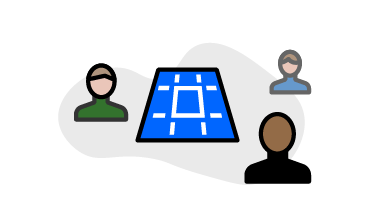
What is it?
Standard Experience Architecture Model.
#SEAMs is a structured, high-level cross-discipline language that clarifies and streamlines digital product creation, evolution and maintenance.
How does it work?
#SEAMs stitches User Centered and Domain Driven Design together.
This provides a framework for mapping the UX, or DX, of digital platforms, products & services to a standard, logical model.
#SEAMs is a framework based in information theory, computer science and interaction design. It provides a model, language and tools for the interaction architecture of information systems.
What does it provide?

& product culture

design & organization

& strategy
Where does it fit?
#SEAMs is best deployed as a shared-stakeholder project between Product, Design & Engineering. Its usefulness at multiple levels of purview means it needs to live vertically, spanning Portfolio, Program and Product.
If you have a design system, #SEAMs can initially be thought of as a “meta design system.” Its building blocks are not the UI elements and style, but the experiences (views, screens, etc…) that exist across your products and portfolio.

The Core #Seams Theory
All interactions with digital products are, at varying levels of specificity, requests for and responses of, data objects.
- We make an unspecified request and get a proposal of sets and objects.
- We make a non-specific request and get a set of objects in response.
- We make a specific request, and get a specific object in response.
← In this graph
- The columns are Objects.
- The rows are the “Level of Specificity of the User’s Request”
- The boxes contain the Experiences that need to be designed and built.
Why does it exist?
Digital product & service making is a team sport, and each team is a unique mess of professional cultures and personal backgrounds. There is no standard language between product management, software engineering and UX design when referring to the various parts, levels, stages and states of digital experiences.
That means the concepts and language which define your products are not interpreted the same way by everyone on the team.
#SEAMs provides a structured model within which your product’s unique concepts and language can be shared. This way, everyone knows tacitly what’s what, how it is connected to every other part… and what needs to be done.
Why “Experience Architecture”
#SEAMs could also be considered a standardized Information Architecture. However, its use and applications reach beyond the traditional organizational bounds of IA’s purview.
Because of its ability to be rendered in highly simplified and abstracted form, it can be used in business & market strategy work. Similarly, it can encompass full resolution brand experience overviews, as well as “pixel perfect” Ixd & VD deliverables.
As such, it is a standardized structure for describing and talking about your digital product’s experience, from a common, objective viewpoint.
